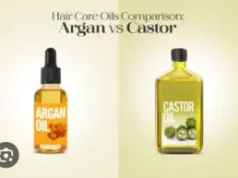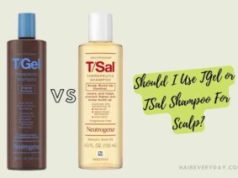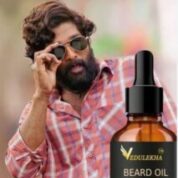Are You the type That always Applies Vaseline on Your Hair with the sole purpose of boosting your Hair Growth without knowing much about it’s effect? Well in this article, we will be discussing about the side effects of Vaseline on Hair. I advise that you keep reading for better knowledge.
Find out How Petroleum Jelly was Discovered
Petroleum jelly, commonly known as Vaseline, was discovered in the 19th century by a chemist named Robert Chesebrough. Chesebrough was traveling through Pennsylvania, USA, and noticed that the oil rig workers used a byproduct of the oil drilling process to treat their minor cuts and burns. This byproduct, a thick, sticky substance, appeared to promote healing and had protective properties.
Intrigued by this observation, Chesebrough decided to investigate further. He extracted the substance from the oil rigs and conducted various experiments to refine and purify it. Eventually, he developed what is now known as petroleum jelly.
Chesebrough patented his invention in 1872 and began marketing it as Vaseline. The product gained popularity quickly due to its versatility and multiple uses, such as moisturizing dry skin, protecting wounds, and soothing chapped lips.
Click to subscribe to our Giveaway Channel thank you
Is Vaseline Good For Hair Growth?
Regarding the use of petroleum jelly for hair growth, there is a common myth that it can promote hair growth. However, this claim lacks scientific evidence. Petroleum jelly is primarily a skin protectant and occlusive agent, meaning it forms a barrier on the skin’s surface to lock in moisture. While it can help moisturize the scalp and hair, there is no substantial proof that it directly stimulates hair growth.
Hair growth is influenced by various factors such as genetics, overall health, diet, and proper hair care practices. To promote healthy hair growth, it is recommended to maintain a balanced diet, keep the scalp clean and moisturized, avoid excessive heat styling and chemical treatments, and consider using hair care products specifically formulated for hair growth or health.
If you’re concerned about hair loss or slow hair growth, it is best to consult a dermatologist or trichologist (hair and scalp specialist) who can provide personalized advice and recommend appropriate treatments or lifestyle changes based on your individual needs.
Also Read: Side effects Of Onions Juice For Hair Growth
Let’s dispel some of the fallacies surrounding using petrolatum on hair in order to comprehend how it affects hair.
- Never leave it overnight. Never let products or oils with a petro-based formula sit in your hair overnight; doing so will only cause dryness and hair damage. Yet, unlike petrolatum, which is a chemical, natural oils can be left overnight as their name implies.
- Petroleum nourishes the hair; yet, unlike popular belief, it cannot mend hair. Petrolatum is only used in hair products as a beautifying ingredient to improve the appearance of the hair. Can petrolatum lead to baldness? It merely lingers on the surface of our hair; it is not absorbed. As a result, petrolatum in hair products is unable to treat hair damage, stop hair loss, or eliminate dandruff.
- Since mineral oil is made from petroleum, some people think it contains carcinogens and is cancer-causing. It is crucial to emphasise that there is no proof or information to back up this rumour. Every ingredient in the cosmetics business is put through a purification process and is only utilised when it is declared safe. Although it is a byproduct of petroleum distillation, mineral oil is a material that can be used without risk.
10 tips to embrace lustrous hair using Vaseline
While petroleum jelly, such as Vaseline, is primarily used as a skin protectant, it can also be used in a few surprising ways to help improve the appearance of your hair. Here are ten tips to embrace lustrous hair using Vaseline:
- Split-end treatment: Apply a small amount of Vaseline to the ends of your hair to help moisturize and temporarily seal split ends. This can give the appearance of healthier, less frizzy hair.
- Hair dye protection: Before applying hair dye, apply a thin layer of Vaseline along your hairline and on your ears to act as a barrier and prevent the dye from staining your skin.
- Brow and lash conditioning: Use a clean mascara wand or your fingertips to apply a tiny amount of Vaseline to your eyebrows and eyelashes. This can help moisturize and condition them, making them appear healthier and potentially promoting their growth.
- Flyaway tamer: If you have flyaways or frizzy hair, rub a small amount of Vaseline between your palms and lightly smooth it over your hair. Be cautious not to use too much, as it can make your hair look greasy.
- Hair shine enhancer: Apply a tiny amount of Vaseline to your fingertips and then lightly run your fingers through your hair to add a natural-looking shine. Again, use sparingly to avoid a greasy appearance.
- Haircut protection: If you’re trimming your own hair or giving someone else a haircut, you can apply a thin layer of Vaseline along the hairline to catch any stray hairs and make cleanup easier.
- Beach and pool hair protector: Before swimming in the ocean or a chlorinated pool, apply a small amount of Vaseline to your hair to create a barrier against the drying effects of saltwater or chemicals.
- Hair dye remover: If you accidentally dye your hair a shade darker than desired, you can try applying Vaseline around the dyed areas to help lift some of the color. However, this may not be as effective as using dedicated hair dye removers.
- Hair gel alternative: In a pinch, you can use a tiny amount of Vaseline to style your hair instead of hair gel. Warm it between your palms and apply sparingly to tame unruly hair.
- Overnight hair treatment: For an intensive moisturizing treatment, apply a generous amount of Vaseline to your hair before bed, focusing on the ends. Cover your hair with a shower cap or towel to prevent the transfer of Vaseline onto your bedding. In the morning, shampoo and condition your hair as usual.
Remember, using Vaseline on your hair is not a substitute for proper hair care and may not be suitable for all hair types. It’s always a good idea to test a small patch of skin or hair before applying Vaseline liberally and to consult a hair care professional if you have specific concerns or conditions.
Also Read: side effects of Using Clove Water For hair Growth
Side Effects of Vaseline on Hair
While Vaseline can have some benefits for hair, it’s important to note that using it in excessive amounts or improperly can have potential drawbacks. Here are some potential side effects of using Vaseline on hair:
- Greasiness: Vaseline is a greasy substance, and using too much of it on your hair can make it look oily and weighed down. It may also attract dirt and impurities, making your hair feel dirty.
- Difficulty in washing out: Vaseline is not water-soluble, which means it can be challenging to completely remove from your hair. This can lead to residue buildup, making your hair appear dull and lifeless.
- Clogged hair follicles: Excessive use of Vaseline can clog the hair follicles and scalp pores, potentially leading to scalp issues like acne or folliculitis (inflammation of hair follicles).
- Lack of breathability: Vaseline creates a barrier on the hair strands, which can prevent proper airflow and moisture balance. This can result in dryness or scalp irritation if used excessively or without proper cleansing.
- Weighed-down hair: The heavy texture of Vaseline can make your hair feel heavy and limp, especially if you use too much of it. This can affect your hair’s volume and overall appearance.
How to use Vaseline the right way
To use Vaseline effectively and minimize potential side effects, follow these guidelines:
- Use sparingly: Apply only a small amount of Vaseline to your hair, focusing on the areas that require moisture or protection. Avoid applying it directly to the scalp.
- Avoid the roots: Concentrate the application of Vaseline on the mid-lengths to the ends of your hair. This prevents the roots from becoming excessively greasy and weighed down.
- Experiment with small quantities: Start with a tiny amount of Vaseline, then gradually increase if needed. This way, you can gauge how much your hair can tolerate without becoming greasy or weighed down.
- Use it as a treatment: Rather than using Vaseline as a daily hair product, consider using it as an occasional treatment for specific purposes like moisturizing split ends or protecting hair during certain activities.
How to remove Vaseline from hair
If you accidentally get Vaseline in your hair or need to remove it, follow these steps:
- Blot and absorb: Use paper towels or a clean cloth to blot and absorb as much Vaseline as possible from your hair. Avoid rubbing or spreading it further.
- Cornstarch or baby powder: Sprinkle cornstarch or baby powder onto the affected areas and gently massage it into your hair to absorb the greasiness. Allow it to sit for about 15 minutes.
- Shampoo and rinse: Wash your hair with a clarifying or degreasing shampoo. Focus on the areas with Vaseline, lathering the shampoo and gently massaging your scalp. Rinse thoroughly with warm water.
- Repeat if necessary: Depending on the amount of Vaseline and how well it comes out, you may need to repeat the shampooing process. It may take a few washes to completely remove all traces of Vaseline.
- Condition and moisturize: After removing the Vaseline, use a hydrating conditioner to restore moisture to your hair. Apply it mainly to the lengths and ends, avoiding the scalp if possible. Rinse thoroughly.
If you’re having difficulty removing the Vaseline or if you’re concerned about the condition of your hair, consider seeking professional help from a hairstylist or salon. They have experience in dealing with various hair-related issues and can provide expert guidance and assistance.
Also Read: How to prepare Onion Juice for Hair Growth
Use Coco Soul
It might be challenging to track down the components in our shampoos and conditioners because so many hair care products contain petroleum-based compounds. To address this, switching to an all-natural hair care regimen is the simplest answer. Crafted with the goodness of virgin king coconut oil and Ayurvedic herbs, Coco Soul’s shampoo and conditioner are petrolatum- free hair care products curated to leave you with healthier and stronger hair with every wash.
FAQs:
Is Vaseline safe to use on hair?
Vaseline can be safe to use on hair when used in moderation and properly. However, excessive use or improper application can lead to greasiness, weighed-down hair, and clogged follicles. It’s important to use Vaseline sparingly and avoid applying it directly to the scalp.
What does petroleum do to hair?
Petroleum jelly side effects go unnoticed as they are often disguised as petroleum, white petroleum, paraffin, liquid paraffin, and paraffin wax. These ingredients cause excessive buildup on your hair and scalp, which results in hair loss.
Can Vaseline promote hair growth?
There is no scientific evidence to support the claim that Vaseline directly promotes hair growth. Hair growth is influenced by various factors such as genetics, overall health, diet, and proper hair care practices.
Can Vaseline be used as a hair moisturizer?
Vaseline can help moisturize the hair, especially when applied to the ends or areas prone to dryness. However, it should be used sparingly to avoid greasiness and weighed-down hair. It’s essential to focus on overall hair health through proper hydration, nutrition, and regular conditioning.
Conclusions
Vaseline, or petroleum jelly, has several uses for skin and hair care. While it can provide benefits such as moisturization and protection, it’s important to use it in moderation and in the appropriate way. Excessive use of Vaseline on hair can lead to greasiness, weighed-down hair, clogged follicles, and difficulty in removal. It’s recommended to apply Vaseline sparingly, focusing on the ends of the hair, and avoiding the scalp. If you encounter issues with Vaseline in your hair or have concerns, consulting a professional hairstylist or dermatologist can provide personalized guidance and assistance.






